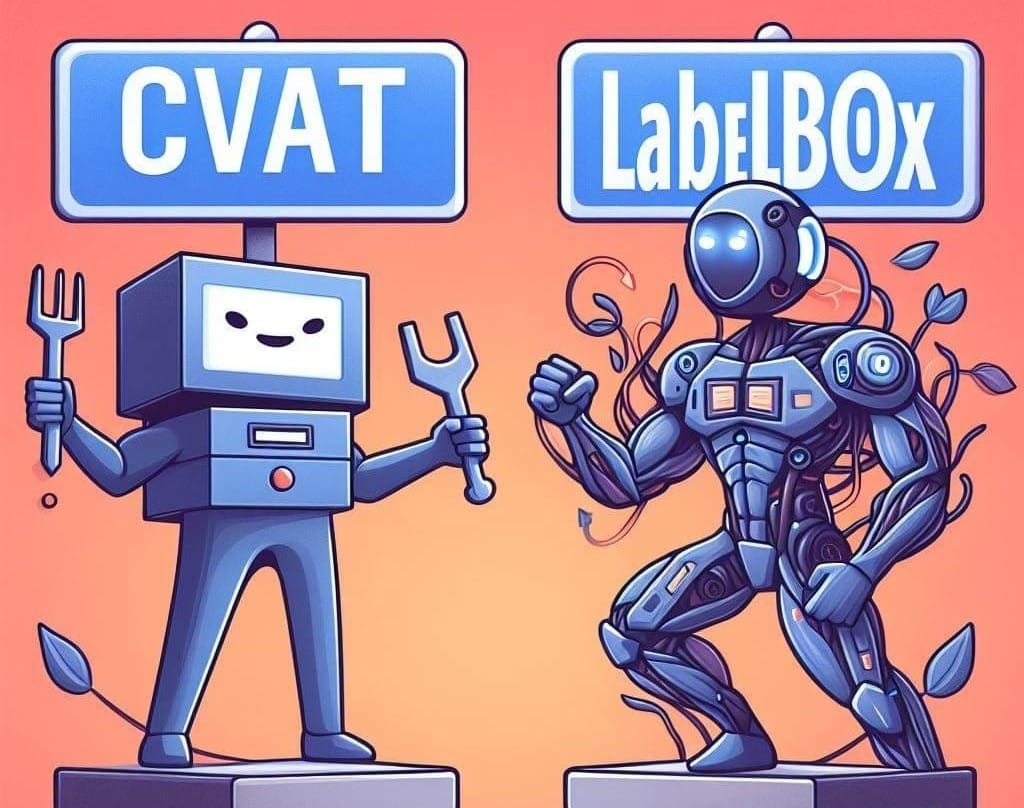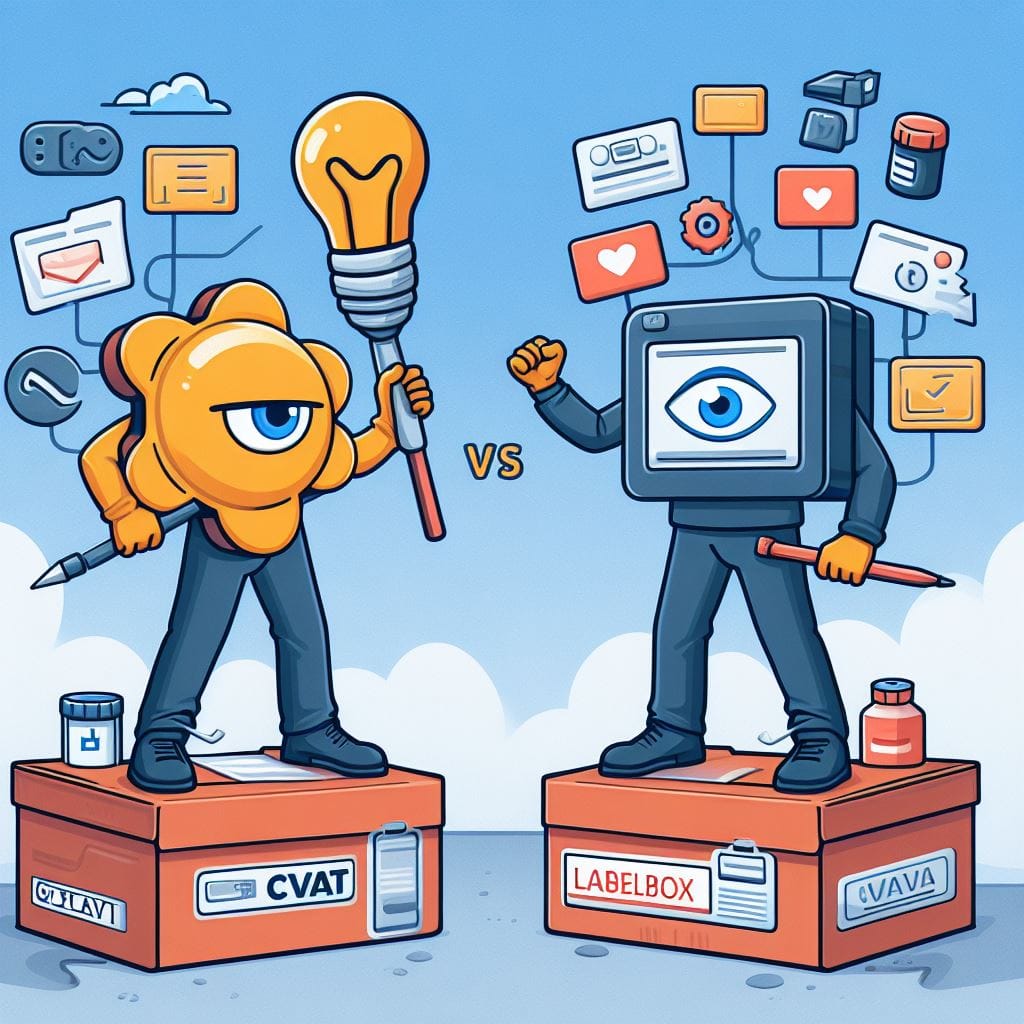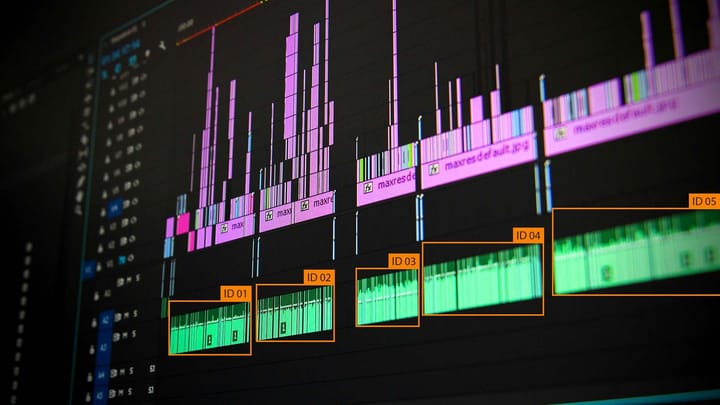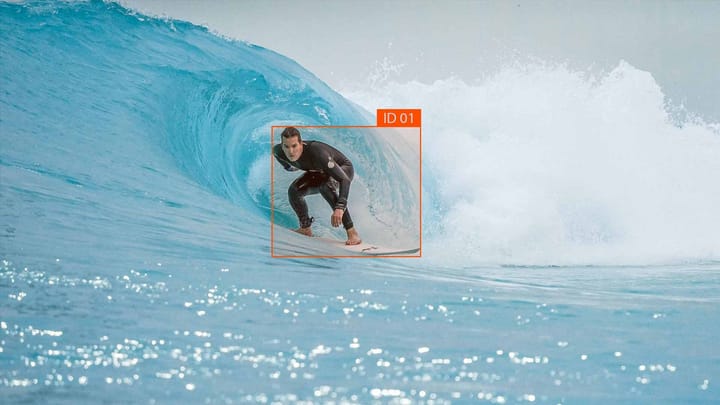CVAT vs Labelbox: Which Annotation Tool Wins?

Data labeling plays a vital role in the development of supervised machine learning models, especially in the field of computer vision. With numerous image annotation tools available, it can be challenging to determine which one is the best fit for your projects. In this article, we will compare two popular options, CVAT and Labelbox, to help you make an informed decision.
Key Takeaways:
- CVAT and Labelbox are leading computer vision annotation tools.
- CVAT is an open-source tool developed by Intel, offering various annotation types and project management features.
- Labelbox provides a comprehensive solution for image and video annotation, with a user-friendly interface and AI-assisted labeling options.
- Consider your specific project requirements, budget, and preferences when choosing between CVAT and Labelbox.
- Try out both tools to evaluate their suitability before making a final decision.
What is CVAT?
CVAT, short for Computer Vision Annotation Tool, is an open-source web-based tool developed and maintained by Intel. It is a powerful annotation tool specifically designed to support various computer vision tasks, including object detection, image classification, and image segmentation. With its intuitive user interface and extensive features, CVAT is widely recognized as a valuable tool for labeling computer vision data.
One of the key strengths of CVAT is its flexibility in handling different annotation types. It offers a variety of options such as boxes, polygons, polylines, and points, allowing annotators to accurately label objects and regions of interest in images. This versatility makes CVAT suitable for a wide range of computer vision applications.
Beyond its annotation capabilities, CVAT also provides robust project management features. Users can easily organize, collaborate, and track the progress of labeling tasks, streamlining the annotation workflow. Additionally, CVAT offers automation tools that can help expedite the annotation process, enhancing efficiency and productivity.
CVAT is an invaluable tool for computer vision annotation. Its wide range of annotation types, project management capabilities, and automation features make it a comprehensive solution for labeling computer vision data.
Overall, CVAT is a versatile and robust tool that offers an all-in-one solution for computer vision annotation. Its extensive features, project management capabilities, and automation options make it a top choice for efficiently labeling and managing computer vision data.
What is Labelbox?
Labelbox is an advanced annotation tool designed to facilitate the labeling of images and videos for a variety of computer vision projects. With a comprehensive set of features, Labelbox offers an efficient and collaborative solution for teams working on data labeling tasks.
One of the key strengths of Labelbox is its diverse range of annotation types. Users can easily annotate objects using bounding boxes, polygons, lines, and keypoints, ensuring accurate and precise labeling. This flexibility allows for the annotation of a wide range of visual elements, making Labelbox suitable for a variety of computer vision applications.
Labelbox also provides robust project management features, enabling teams to collaborate on labeling tasks seamlessly. Project managers can assign specific labeling jobs to team members, track progress, and ensure consistent quality across annotations. This streamlined workflow enhances efficiency and facilitates effective project management.
Moreover, Labelbox offers automation options that help expedite the annotation process. Leveraging automation tools, users can automate repetitive and time-consuming tasks, such as pre-labeling or generating initial annotations. This not only saves time but also increases productivity, enabling teams to complete labeling projects more efficiently.
Labelbox's user-friendly interface and intuitive design make it an accessible tool for both beginners and experienced users. Its powerful annotation capabilities, project management features, and automation options make it a top choice for organizations working on computer vision projects.
Feature Comparison of CVAT and Labelbox
Both CVAT and Labelbox offer a range of features for image annotation, making them popular choices among AI practitioners. Let's take a closer look at the key features and capabilities of each tool to help you make an informed decision for your annotation needs.
CVAT
CVAT, short for Computer Vision Annotation Tool, is an open-source annotation platform developed and maintained by Intel. It offers a comprehensive set of features designed to support various annotation tasks. Some of the notable features of CVAT include:
- Support for multiple annotation types, including bounding boxes, polygons, polylines, and points.
- Project management capabilities, allowing teams to collaborate and efficiently manage annotation tasks.
- Automation tools to enhance annotation speed and productivity.
These features provide users with the flexibility and control needed to annotate images effectively. However, it is important to note that the user interface of CVAT can be complex, requiring some time to get familiar with its functionalities. Additionally, users have reported occasional performance issues, particularly when switching between images.
Labelbox
Labelbox is a popular annotation tool known for its user-friendly interface and comprehensive annotation options. It offers an array of features that cater to the needs of both individual annotators and large annotation teams. Here are some of the key features of Labelbox:
- Diverse annotation types, including bounding boxes, polygons, lines, and keypoints, to accommodate various labeling requirements.
- Robust project management features that facilitate collaboration, task assignment, and progress tracking.
- AI-assisted labeling capabilities to speed up the annotation process and improve efficiency.
Labelbox's intuitive interface and comprehensive annotation capabilities make it an attractive option for users looking for a user-friendly and feature-rich tool. However, it's worth mentioning that Labelbox is a paid tool, and its pricing structure may not suit all budgets. Additionally, an internet connection is required to access the Labelbox platform effectively.
Feature Comparison
Now let's compare the key features of CVAT and Labelbox side by side:
| Features | CVAT | Labelbox |
|---|---|---|
| Annotation Types | Bounding boxes, polygons, polylines, points | Bounding boxes, polygons, lines, keypoints |
| Project Management | Yes | Yes |
| Automation | Yes | No |
| AI-Assisted Labeling | No | Yes |
| Interface | Complex | User-friendly |
| Pricing | Free (open-source) | Paid |
| Offline Usage | Supported | No |
It's essential to consider your project's specific requirements and your team's preferences when deciding between CVAT and Labelbox. CVAT's open-source nature and extensive annotation options make it an ideal choice for users with advanced technical skills, while Labelbox's user-friendly interface and AI-assisted labeling capabilities offer convenience and efficiency for diverse projects.
Continue reading to learn more about the pros and cons of using CVAT and Labelbox in the upcoming sections.
Pros and Cons of Using CVAT
CVAT, an open-source tool with a web-based interface, offers several advantages in the field of computer vision annotation. Its features include various annotation types and project management functionalities, making it a versatile choice. However, like any tool, CVAT also has its disadvantages that need to be considered.
One of the significant advantages of using CVAT is its open-source nature. This allows for flexibility and customization, making it suitable for a wide range of projects. Its web-based interface ensures easy accessibility from any device with an internet connection, providing convenience and flexibility for users.
CVAT offers a diverse set of annotation types, including boxes, polygons, polylines, and points. This wide range of options allows for precise and accurate annotation of different objects and features in images. Additionally, CVAT supports project management features, enabling teams to collaborate efficiently and manage large-scale annotation projects effectively.
However, it's worth noting that CVAT does have its drawbacks. The complexity of the user interface may require some time and effort to master, especially for users who are new to computer vision annotation tools. The learning curve can be steep, making it less beginner-friendly compared to other available options.
Another aspect to consider is the performance of CVAT, which can be affected by the speed of switching between images. With large datasets, this can impact productivity and annotation efficiency. This is an important factor to consider for projects that require rapid annotation of a high volume of images.
Note: CVAT is a powerful annotation tool with numerous advantages, but it may not be the best fit for every project. Consider the complexity of the interface and the impact of switching speed on your annotation workflow when deciding whether CVAT is the right tool for your needs.
To summarize, some advantages of using CVAT include its open-source nature, web-based interface, various annotation types, and project management features. However, it may have a steep learning curve and can be affected by switching speed. Carefully assess your project requirements and team expertise before deciding if CVAT is the best annotation tool for your computer vision projects.

Pros and Cons of Using Labelbox
Labelbox is a versatile annotation tool that offers several advantages for computer vision projects. Its user-friendly interface makes it easy for users to navigate and utilize its features effectively. Labelbox provides a wide range of annotation types, including bounding boxes, polygons, lines, and keypoints, catering to various annotation requirements.
One of the significant advantages of Labelbox is its support for project management features. Teams can collaborate seamlessly within the platform, assigning tasks, tracking progress, and ensuring efficient labeling workflows. This feature streamlines the annotation process and enhances productivity by enabling effective communication among team members.
Another notable advantage of Labelbox is its AI-assisted labeling capabilities. With AI-powered tools, users can automate certain aspects of the annotation process, such as pre-labeling or auto-labeling based on predefined criteria. This significantly speeds up the labeling process and reduces manual labor, allowing users to handle large datasets more efficiently.
However, it is important to consider the potential disadvantages of using Labelbox. Firstly, Labelbox is a paid tool, and its pricing may not be suitable for all budgets. Organizations or individuals with limited financial resources may find it challenging to afford Labelbox's services, especially for long-term projects.
Additionally, Labelbox is a cloud-based platform, meaning it requires an internet connection to access and use the tool. While this enables easy collaboration and data accessibility, it also means that users are dependent on a stable internet connection. In scenarios where internet connectivity is inconsistent or restricted, working with Labelbox may pose challenges.
To summarize, Labelbox offers a user-friendly interface, a wide variety of annotation types, and project management features that enhance collaboration. Its AI-assisted labeling capabilities also streamline the annotation process and boost efficiency. However, the paid nature of the tool and the need for an internet connection should be considered when determining if Labelbox is the right fit for your project.
Comparison of CVAT and Labelbox
When comparing CVAT and Labelbox, it is important to consider specific features and capabilities. CVAT is an open-source annotation tool that offers a wide range of annotation types and project management features. On the other hand, Labelbox provides a user-friendly interface, AI-assisted labeling, and a comprehensive set of annotation types. The choice between CVAT and Labelbox depends on individual preferences, project requirements, and budget considerations.
| CVAT | Labelbox |
|---|---|
| Open-source tool | Paid tool |
| Offers various annotation types | Provides a comprehensive set of annotation types |
| Includes project management features | Supports project management features |
| Automation tools available | Offers AI-assisted labeling |
| Complex user interface | User-friendly interface |
| Switching between images can be slow | Requires an internet connection |
CVAT is an ideal choice for users looking for an open-source tool with extensive customization options. It offers flexibility in annotation types and advanced project management capabilities. However, its complex user interface may require some time to master.
Labelbox, on the other hand, is suitable for users seeking a user-friendly interface and efficient annotation process. It provides AI-assisted labeling and a comprehensive set of annotation types, making it an excellent choice for both beginner and advanced users. However, it comes with a cost and requires an internet connection to access the platform.
Ultimately, the decision between CVAT and Labelbox depends on the specific needs of the project. Consider the level of customization required, annotation types needed, budget constraints, and ease of use when making a choice between these two annotation tools.
Best Annotation Platform for Computer Vision Projects
When it comes to annotating data for computer vision projects, two of the top contenders in the field are CVAT and Labelbox. Both platforms have established themselves as reputable annotation tools, each with its own set of strengths and weaknesses. To determine the best annotation platform for your specific project, it is crucial to consider your individual needs, budget, and preferences.
CVAT, or Computer Vision Annotation Tool, is an open-source web-based tool developed and maintained by Intel. It offers a wide range of annotation types, including boxes, polygons, polylines, and points. Besides its robust annotation capabilities, CVAT also provides project management features and automation tools.
Labelbox, on the other hand, is a comprehensive annotation tool that offers a user-friendly interface and a variety of annotation types, such as bounding boxes, polygons, lines, and keypoints. It not only supports project management features but also offers AI-assisted labeling, which can greatly expedite the annotation process.
To make an informed decision, it is recommended to try out both CVAT and Labelbox and evaluate how well they align with your specific requirements. Consider factors such as the complexity of the user interface, the range of annotation types available, the level of project management support needed, and the budget constraints of your project. By thoroughly assessing these aspects, you can select the best annotation platform for your computer vision projects.
Feature Comparison
Here is a comparison of some key features of CVAT and Labelbox:
| Annotation Types | Project Management | Automation |
|---|---|---|
| CVAT offers various annotation types, including boxes, polygons, polylines, and points. | CVAT provides project management capabilities to help you organize and track your annotation projects. | CVAT offers automation tools to streamline the annotation process. |
| Labelbox supports a wide range of annotation types, such as bounding boxes, polygons, lines, and keypoints. | Labelbox allows collaborative project management, enabling teams to work together on annotation tasks. | Labelbox offers AI-assisted labeling features for improved efficiency. |
Ultimately, the choice between CVAT and Labelbox boils down to your specific needs and preferences. While CVAT may be more suitable for those seeking an open-source tool with extensive project management capabilities, Labelbox excels in providing a user-friendly interface and AI-assisted labeling functionalities. By evaluating these factors alongside your project requirements, you can determine the best annotation platform for your computer vision projects.
Remember to make an informed decision by carefully considering the features and evaluating how well they align with your project needs. Choosing the right annotation platform is crucial to ensure the accuracy and efficiency of your computer vision projects.
Conclusion
In conclusion, both CVAT and Labelbox are powerful annotation tools that offer a variety of features for computer vision projects. CVAT provides a versatile set of annotation types and project management capabilities, making it suitable for a wide range of tasks. On the other hand, Labelbox stands out with its user-friendly interface, AI-assisted labeling, and comprehensive annotation options.
When deciding between CVAT and Labelbox, it is important to consider the specific needs and preferences of your project. If you require a tool with extensive project management capabilities and a diverse range of annotation types, CVAT may be the better choice. However, if you value a user-friendly interface and the convenience of AI-assisted labeling, Labelbox may be the more suitable option.
Ultimately, the best tool for your computer vision projects will depend on your unique requirements and budget considerations. It is recommended to try out both CVAT and Labelbox, evaluate their features, and assess how well they align with your project needs before making a final decision. Whether you choose CVAT or Labelbox, you can be confident in having a powerful annotation tool to support your computer vision endeavors.
FAQ
What is the difference between CVAT and Labelbox?
CVAT is an open-source web-based annotation tool developed by Intel, while Labelbox is a comprehensive annotation tool that offers a wide range of features and annotation types.
What are the key features of CVAT?
CVAT offers various annotation types, project management capabilities, and automation tools for computer vision tasks.
What are the main features of Labelbox?
Labelbox provides a user-friendly interface, project management features, and AI-assisted labeling to speed up the annotation process.
What are the pros and cons of using CVAT?
CVAT is an open-source tool with versatile annotation types and project management features, but it may have a complex user interface and performance issues when switching between images.
What are the pros and cons of using Labelbox?
Labelbox offers a user-friendly interface, AI-assisted labeling, and comprehensive annotation options, but it is a paid tool and requires an internet connection.
How do CVAT and Labelbox compare in terms of features?
Both CVAT and Labelbox offer a range of annotation types and project management capabilities, but Labelbox also provides AI-assisted labeling options.
Which is the best annotation platform for computer vision projects?
The best annotation platform depends on specific needs, preferences, and budget considerations. Both CVAT and Labelbox are reputable tools with their own strengths and weaknesses.



Comments ()